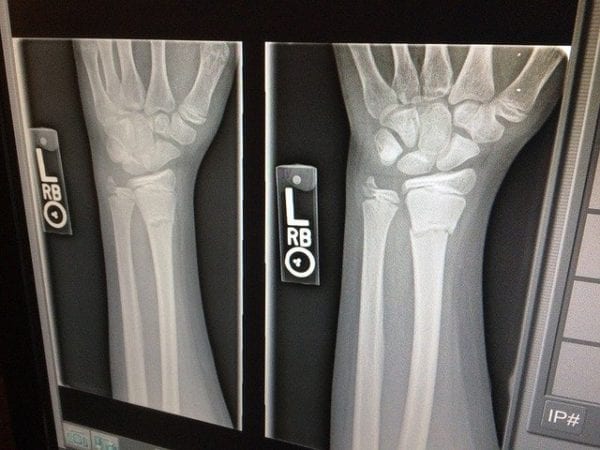Osteoporosis is the condition in which bone density is reduced and the patient has an increased risk of fractures. According to the International Osteoporosis Foundation, an estimated 44 million people in the US population aged 50 and older suffer from osteoporosis and low bone mass. There are many risk factors such as age, alteration of sexual hormones, lifestyle management, and underlying conditions associated with causing osteoporosis. Another focus of clinical pharmacists needs to be on drug-induced osteoporosis.
In this blog, we are going to focus on the medications that have a risk of causing osteoporosis and fractures.
Glucocorticoids such as prednisone, dexamethasone, etc., are associated with reduced activity of the bone-forming cells and increased activity of the cells that break down bone. This results in bone density loss, causing osteoporosis.
Proton pump inhibitors increase bone resorption via suppressing acid secretion and decreasing intestinal absorption of calcium.
Available data reports that anticonvulsants are associated with bone loss. However, the mechanism of most anticonvulsants is not well understood. There is a theory that CYP450 enzymes inducing anticonvulsants such as phenytoin, phenobarbital, and carbamazepine inactivate Vitamin D, which decreases calcium absorption and interferes with bone formation. Valproic acid increases the risk of developing osteoporosis because of hypophosphatemia which is caused by Fanconi syndrome. Fanconi syndrome is a condition in which the kidney excretes excess amounts of glucose, bicarbonate, phosphates (phosphorus salts), uric acid, potassium, and certain amino acids in the urine. For non-enzyme-inducing anticonvulsants, the mechanism of action is still unknown.
Medroxyprogesterone acetate (MPA) decreases bone density by inhibiting gonadotropin secretion and suppressing ovulation as well as estrogen production. The reduction in estrogen causes a 2-8% decrease in bone mineral density.
Aromatase inhibitors lower the estrogen level in the body via inhibition of the peripheral conversion of androgens to estrogens. The low estrogen level is associated with osteoporosis.
Gonadotropin-releasing hormone agonists (GnRH) downregulate the gonadotropin-producing cells and decrease luteinizing hormone and follicle-stimulating hormone secretion which limits the production of testosterone and estrogen.
Thiazolidinediones (TZDs) interfere with bone formation and remodeling via impairing the differentiation of osteoblast precursors. TZDs also promote osteoclast differentiation, leading to increased bone resorption.
Excessive levothyroxine supplementation may also contribute to osteoporosis. It is suspected to increase the activity of osteoclasts which breakdown bone.
Long-term use of heparin reduces bone mineral density and increased fractures. Unfractionated heparin inhibits osteoblast differentiation and function, causing decreases in bone formation. When used for a short period of time, the effect on bone is minimal.
Health care professionals should aware of the risk of drug-induced osteoporosis Bone mineral density should be monitored closely when prescribing and dispensing these medications to a patient who has risk factors for developing osteoporosis.
Written by Su Myat in collaboration with Eric Christianson, PharmD, BCPS BCGP
- 30 medication mistakes PDF
- 18+ Page Drug Interaction PDF
- 10 Commandments of Polypharmacy Webinar based on my experiences in clinical practice
Study Materials and Resources For Healthcare Professionals and Students – Amazon Books
References
Panday K, Gona A, Humphrey MB. Medication-induced osteoporosis: screening and treatment strategies. Ther Adv Musculoskelet Dis. 2014;6(5):185-202. DOI:10.1177/1759720X14546350
Schweiger JU, Schweiger U, Hüppe M, et al. The Use of Antidepressive Agents and Bone Mineral Density in Women: A Meta-Analysis. Int J Environ Res Public Health. 2018;15(7):1373. Published 2018 Jun 30. DOI:10.3390/ijerph15071373
International Osteoporosis Foundation. Facts and Statistics. Accessed on July 2, 2020. Accessed from https://www.iofbonehealth.org/facts-statistics#:~:text=USA%3A%20Osteoporosis%20and%20low%20bone,the%20United%20States%20(241).Osteoporoiss Canada National Organization. Medication that can cause bone loss, Fall and/or fractures. Accessed on july, 2 2020. Accessed from ttps://osteoporosis.ca/about-the-disease/what-is-osteoporosis/secondary-osteoporosis/medications-that-can-cause-bone-loss-falls-andor-fractures/



Solid post, love the consolidation of information. Thanks Eric.